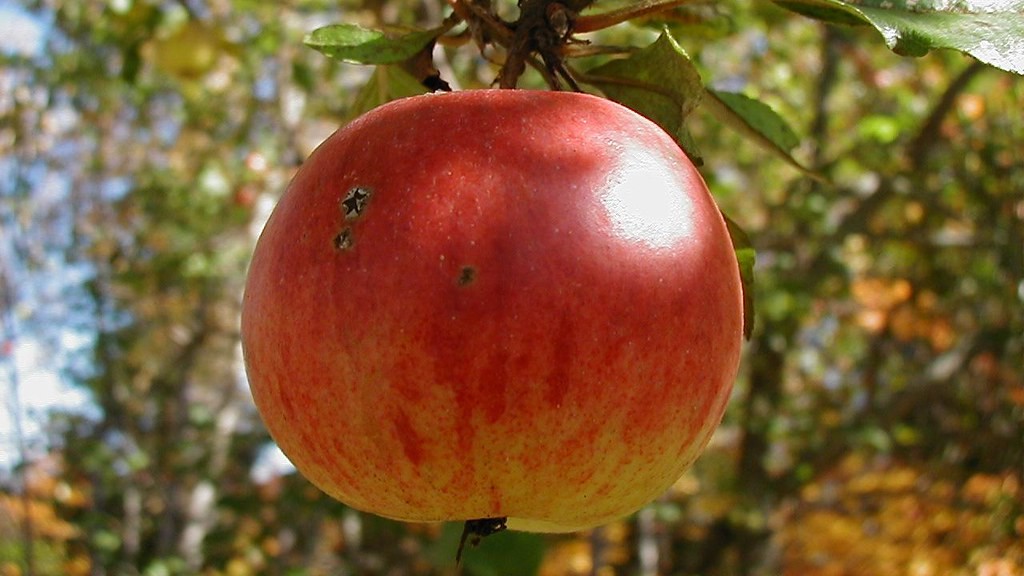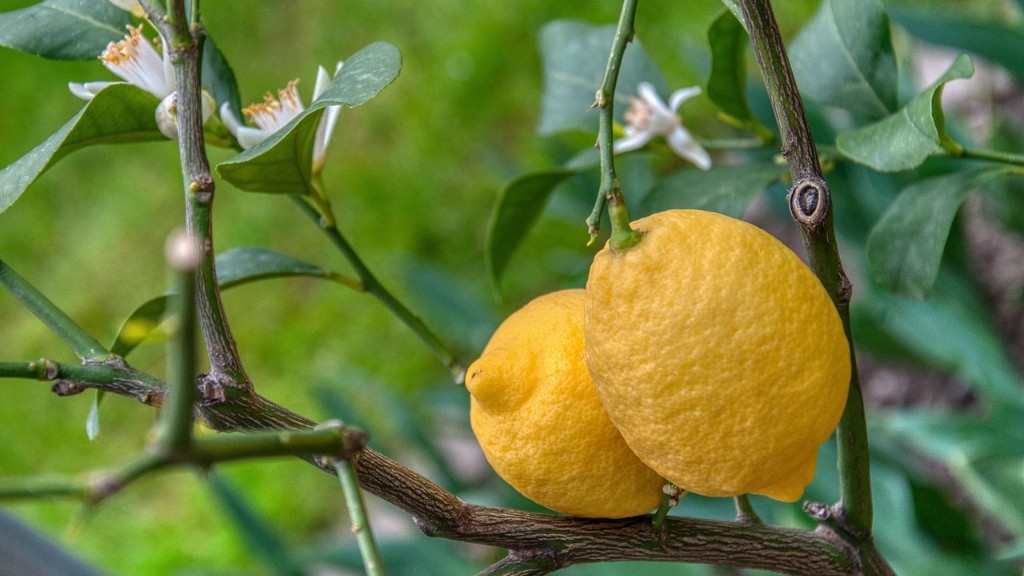Pruning an apple tree is an important job that must be done at the right time of year to promote healthy growth and abundant fruit harvest. Generally, late winter or early spring is the best time to trim a apple tree. The purpose of pruning is twofold: to remove dead, diseased, and poorly-shaped branches to improve the tree’s form, and to create good light and air circulation for both growth and fruiting. When pruning an apple tree it’s important to remember to remove any water sprouts, which are vertical growing shoots, and any shoots that cross each other, as well as any branches that are diseased, dead, or damaged. For a mature apple tree, prune about a third of the length of shoots with the fewest fruits on them inside the canopy. Pruning the shoots on the outside of the tree more severely can result in plenty of open space and increased sun exposure, but this can have a negative effect because the sunlight will attract pests and if the tree is over trimmed, it won’t be able to provide enough shade or protection to the fruit.
When To Prune an Apple Tree
Apple trees should only be pruned in late winter or early spring, when all the leaves are off the tree, and it is still in a dormant state. Pruning a tree while dormant can help reduce the stress the tree would otherwise suffer throughout the busy growing season, giving it a better chance at an abundant harvest. Pruning during the busy growing season, when the tree is putting out new leaves and blossoms, will put an excessive amount of stress on the tree, and can lead to a decrease in yield. Any pruning that needs to be done once the tree is in full bloom should be kept to a minimum.
Tools for Pruning an Apple Tree
Pruning an apple tree requires sharp, clean tools for a successful trimming job. A bypass pruner and a long-handled lopper are both ideal for pruning, as they will help you to easily reach and cut off any stems or branches that need to be removed. The bypass pruner is best for smaller branches up to 1 inch and the lopper can handle branches up to 2 or 3 inches. For branches wider than 3 inches, a saw should be used instead of the lopper. It is important to keep the blades of both tools sharp so that you will be able to make precise cuts and avoid damaging the branch or stem too severely. A sharpening stone can be used to sharpen the blades when necessary.
Safety Tips For Pruning an Apple Tree
When pruning an apple tree, safety must be taken into consideration at all times. As you might need to reach higher up in the tree to trim some of the larger branches, it is recommended to use a sturdy ladder that is properly fitted with a tool basket so you can keep your tools at hand as you work in the tree. Invest in a climbing harness, as well, to avoid any danger of slipping off the ladder. Wear a pair of protective gardening gloves when handling the tools, as well. It would also be a good idea to wear sunglasses to protect your eyes from any debris falling from the tree.
After Pruning An Apple Tree
After you have completed the pruning job, it is important to make sure you tidy up the area. Check the ground around the tree and rake any fallen leaves, twigs, and other debris. This can help reduce the chances of disease and pests in the tree. Finally, you should also make sure to inspect your pruning job to make sure you have removed all dead, diseased, and poorly-shaped branches, and to see if there are any pruning jobs that need to be done in the coming season.
Effects of Pruning An Apple Tree
Pruning an apple tree has a number of beneficial effects for the tree. Pruning helps shape the tree by removing dead, diseased, and poorly-shaped branches, allowing sunlight and air to circulate around the tree more evenly. This helps to promote healthy growth and flowers blooming, which leads to an abundant harvest. Pruning also helps to reduce the chances of disease and pests in the tree by getting rid of infected or infested branches, and it can make harvesting the fruit easier by creating a more organized canopy.
Precautions When Pruning An Apple Tree
Although pruning an apple tree is a necessary job for promoting healthy growth and abundant fruit harvest, it is important to take the appropriate precautions before, during, and after the pruning process. Make sure to manually inspect the tree to identify any infected, dead, or damaged branches that need to be removed, and to check for any pests or disease that might be present. Use safety equipment such as a climbing harness, tool basket, and protective gloves when getting up in the tree. Keep all pruning tools clean and sharp for precise cuts, and finally, clean up any debris underneath the tree once the job is complete.
Advantages of Pruning An Apple Tree
Pruning an apple tree is essential for promoting healthy growth, abundant fruit harvest, and to reduce the chances of disease and pests. Pruning helps to create an even canopy, provides better air and light circulation, and helps to shape the tree into an attractive form. Pruning also keeps the canopy organized, making it easier to harvest the fruit when it is ready, and pruning during the dormant season reduces the amount of stress the tree will experience throughout the growing season. All in all, pruning is an important job that must be done at the right time of year.
Pruning Techniques For An Apple Tree
There are a few common pruning techniques for apple trees, including thinning and heading cuts. Thinning cuts involve removing individual stems and branches back to their main stem, which helps to promote light and air circulation in the canopy. Heading cuts are more drastic than thinning cuts, as they involve removing a significant portion of the shoot instead of just a few branches. Heading cuts help to shape the tree, as well as reduce the size of the canopy. It is important to remember to remove any water sprouts or shoots that are crossing each other, as they will not be beneficial and can even damage the tree.
How To Prune An Apple Tree
When pruning an apple tree, it is important to remember to remove any dead, diseased, or poorly-shaped branches, as well as water sprouts and any shoots that are crossing each other. A bypass pruner and a long-handled lopper should be used to make sure all the cuts are precise, and safety equipment such as a climbing harness and protective gloves should be worn. When the pruning is complete, make sure to check the ground around the tree and tidy up the area of any debris, and inspect the tree afterwards to ensure a successful job. All in all, pruning an apple tree is a necessary job that must be done at the right time of year.


